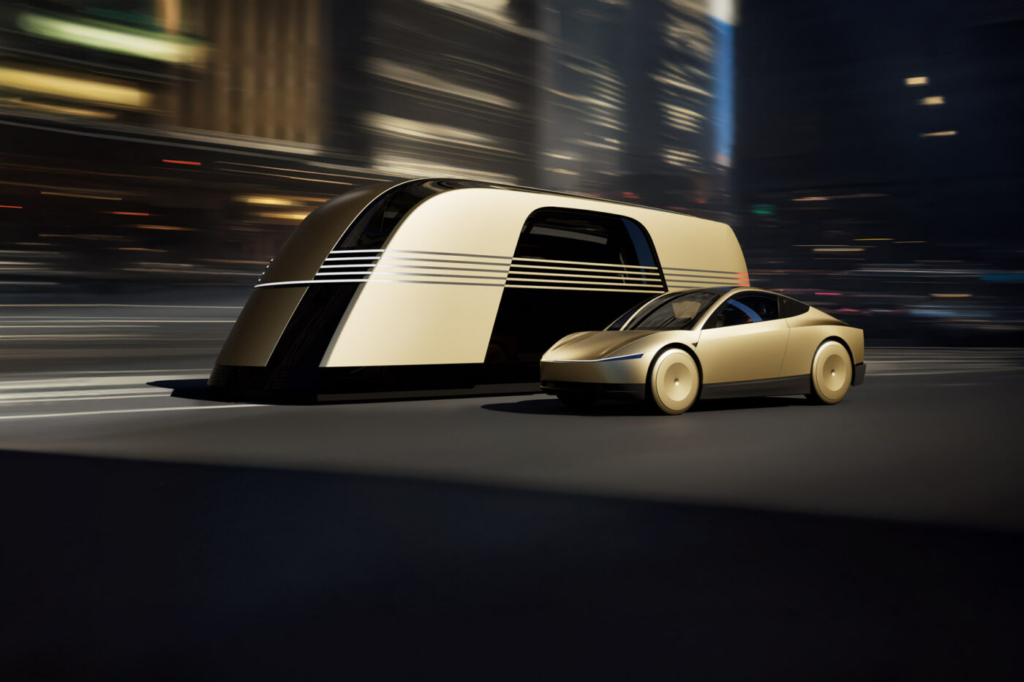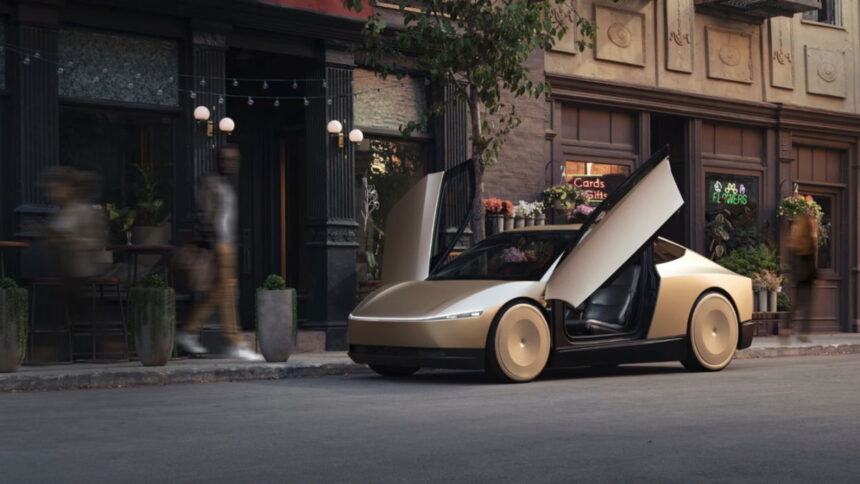Robovan Also Presented Using LiDAR not AI
Elon Musk introduced Tesla’s latest advancement in autonomous vehicles, revealing two electric models designed for driverless urban transit: the “Cybercab” and the “Robovan.” Presented at a live ‘We, Robot’ event in California, these vehicles showcase Tesla’s vision of affordable, automated rides that operate without human intervention.
What’s Happening & Why This Matters
Musk showcased the Cybercab — a compact, two-seater with butterfly doors and a sleek, stainless-steel body. Modeled after Tesla’s Cybertruck aesthetic, the Cybercab features a single band of headlights and lacks both a steering wheel and pedals, fully committing to Tesla’s driverless philosophy. Unlike most electric vehicles, the Cybercab charges via induction, making charging more efficient. Tesla anticipates production by 2026, targeting a price below $30,000. Musk envisions the Cybercab as a mainstream, affordable choice, projecting an operational cost of just 20 cents per mile.
Tesla’s second release, the Robovan, is a larger, autonomous van with a capacity for up to 20 passengers. Musk and Tesla designers foresee it as a versatile option, potentially functioning as a camper van, school bus, or even a wedding shuttle. Similar to the Cybercab, the Robovan excludes traditional driving controls and relies entirely on AI and Tesla’s “vision” technology to navigate, forgoing LiDAR and other external sensors used by Tesla’s competitors like Waymo and Cruise.

Tesla plans to initiate Full Self-Driving (FSD) trials for the Model 3 and Model Y in Texas and California, potentially setting the stage for the Cybercab and Robovan to enter real-world operations. Musk asserts that autonomous vehicles will surpass human-driven cars in safety by removing driver distractions and responding instantly to unpredictable scenarios. However, autonomous driving remains controversial, with Tesla’s FSD program under scrutiny from U.S. regulators due to incidents involving Tesla’s Autopilot and numerous minor accidents reported with robotaxis.
Regulatory Hurdles and Challenges
While U.S. and Chinese cities have already started adopting robotaxis, Europe has been slower to implement autonomous driving regulations. According to European Commission guidelines, only limited “hands-on” autonomous functions are currently allowed, which hinders Tesla’s progress in that market. Industry experts emphasize that Europe risks lagging in this fast-evolving technology without policy adjustments to accommodate advanced autonomy.
Achieving reliability remains a significant challenge for Tesla’s robotaxis. The vehicles rely on computer vision and end-to-end AI learning, but several operational issues—particularly with charging infrastructure and the absence of human oversight—continue to impact robotaxi fleets. Crijn Bouman, CEO of Rocsys, noted that quick, autonomous charging solutions could be crucial for maximizing uptime and efficiency, emphasizing the need for a scalable, decentralized charging infrastructure to meet robotaxi demands.
Tesla also continues to work on other ambitious AI-driven products, including its humanoid robot, Optimus, which Musk expects to cost between $20,000 and $30,000 upon release.
TF Summary: What’s Next
Tesla’s unveiling of the Cybercab and Robovan is a vision for mass-market autonomous vehicles. The ‘We, Robot’ event attempts to push Tesla to the forefront of the robotaxi industry. While Musk’s optimism suggests wide-scale adoption, regulatory, safety, and infrastructure challenges remain. Future developments depend on Tesla’s ability to battle obstacles and international regulations adaption.
With real-world testing beginning next year, Tesla’s advancements will continue to be watched closely as they strive a new urban mobility.



